Wildlife Sightings North and East Yorkshire - January 2018
The New Year started relatively mild with average temperatures in Humberside recorded as 6°C. At this time storm Eleanor was passing over the British Isles with strong south-westerly winds further south and west of us. Snow fell on the 17th with several inches covering the region but it didn’t last long, gradually melting in the days to come. This coincided with the coldest period of the month for several days between the 17th and 21st, when the minimum temperature in Bridlington fell to -1°C on the 21st. After this icy blast from the west, the air warmed up slightly, progressing slowly to a monthly high on the coast of 11°C in Bridlington on the 29th. The met office recorded the January 2018 UK mean temperatures at 4.1°C which is 0.4 °C above the 1981-2010 long-term average and rainfall at or above average. This would certainly seem to chime well with our experience of water levels in our region which appeared relatively high compared with recent years. Winds were recorded from the north on only four days in Bridlington during the month which may have contributed to the lower numbers of scarce seabirds seen on the coast.
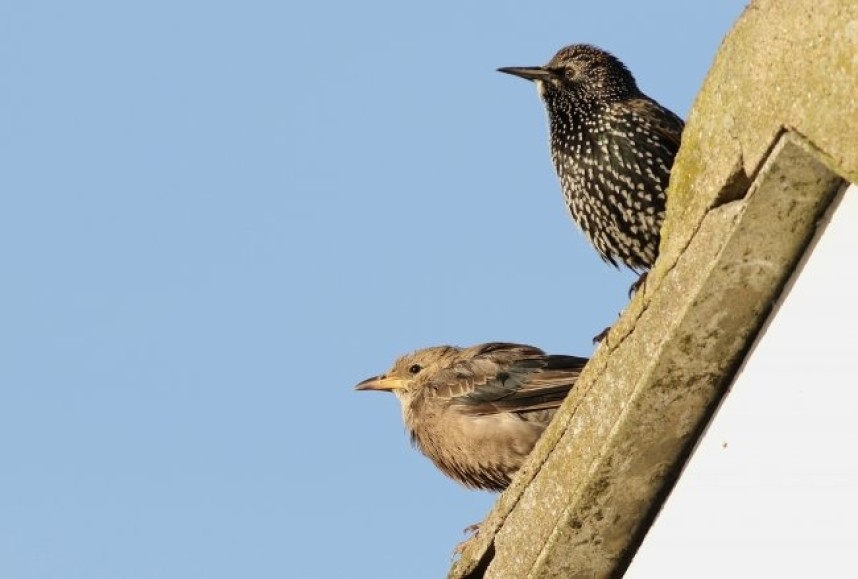
Rosy Starling and Common Starling Easington © Spurn Bird Observatory Trust
The first day of the year is always an exciting time for birders. Staring a New Year list or getting out to work off those holiday feasts, early January always brings a rush of good sightings in the first week. The three long staying rarities were all still present on the 1st and 2nd; the Desert Wheatear at Whitby, American Wigeon at Wheldrake and the Rosy Starling at Easington. Also popular was the flock of 14 Snow Buntings at Danby Beacon and the unprecedented and irresistible Hawfinches! In the first two weeks of the month, maximum Hawfinch totals at the regular sites included; 72 at Yorkshire Arboretum counted on the 7th (but reported to be over 100 there), six at Skelton Castle, seven at Brompton Church yard, 20 at Fountains Abbey and 25 at Gilling East. With other smaller numbers reported from a variety of locations throughout the month there must have easily been 200 still with us in North and East Yorkshire throughout January. Lapland Buntings continued to be very scarce so the 20 at North Dykes Flamborough on the 1st still represented the only significant flock in our region. The flock then increased to an impressive 44 on the 5th. Also on the 1st and excellent count of 53 Great Crested Grebe at Sewerby, a Jack Snipe was at Thornwick Pools and another at Buckton and 39 Barnacle Geese flew past the Headland. A Richards Pipit at Flamborough in the Thornwick area on the 6th was most likely the bird seen earlier in the winter. Following this sighting it was seen again on several dates to the end of the month.
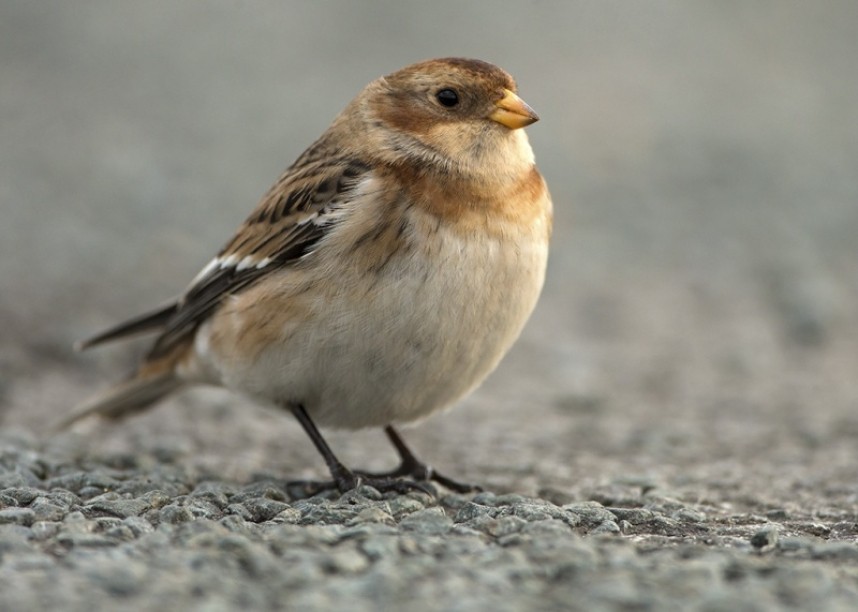
Snow Bunting Whitby North Yorkshire © Steve Race
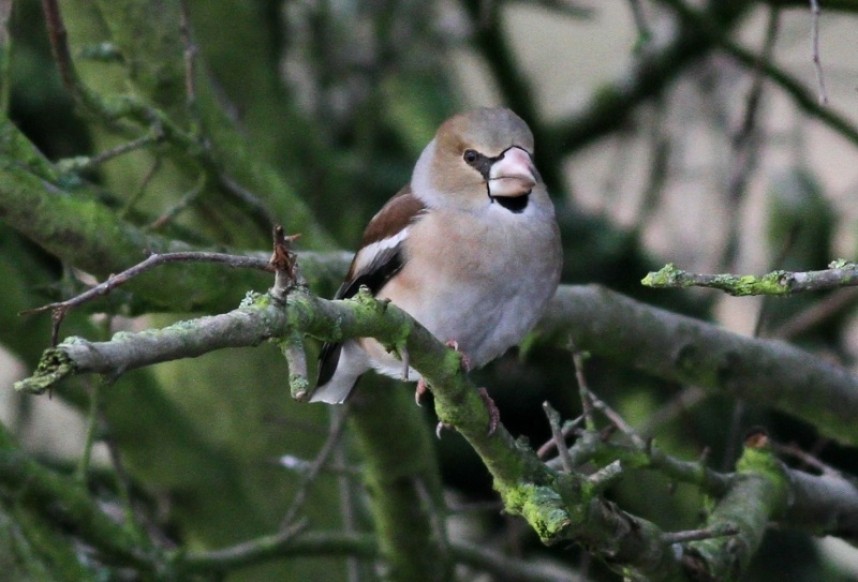
Hawfinch Brompton Church Yard North Yorkshire © Richard Willison
On the 4th a single Waxwing was found in an Easington garden and another flew over Spurn the following day. These birds were the first of a small influx into the east of England and the first movement any this winter in stark contrast to last winter’s big numbers. On the 6th one was seen in Scarborough and a few days later two very popular birds took up residence for a week in the now annual refuelling site for Waxwings; B&Q car park. Singles were also seen over Huntington near York, Redcar, Brotton, Flamborough, Saltburn, Skelton and Filey during the first two weeks of the month. The largest number seen together was four in Filey on the 8th and four in a garden at Scalby on the 22nd. A Green-winged Teal found at Kilnsea Wetlands on the 5th was only the third record for the Spurn recording area and it was still present at the end of the month. By far the biggest numbers of Twite seen was the long staying flock of 70+ at South Gare on the 6th (140 were then counted on the 19th) Two Snow Buntings joined them on the 7th. Six Shorelark were still at Aldborough on the 7th after being seen regularly throughout the winter.
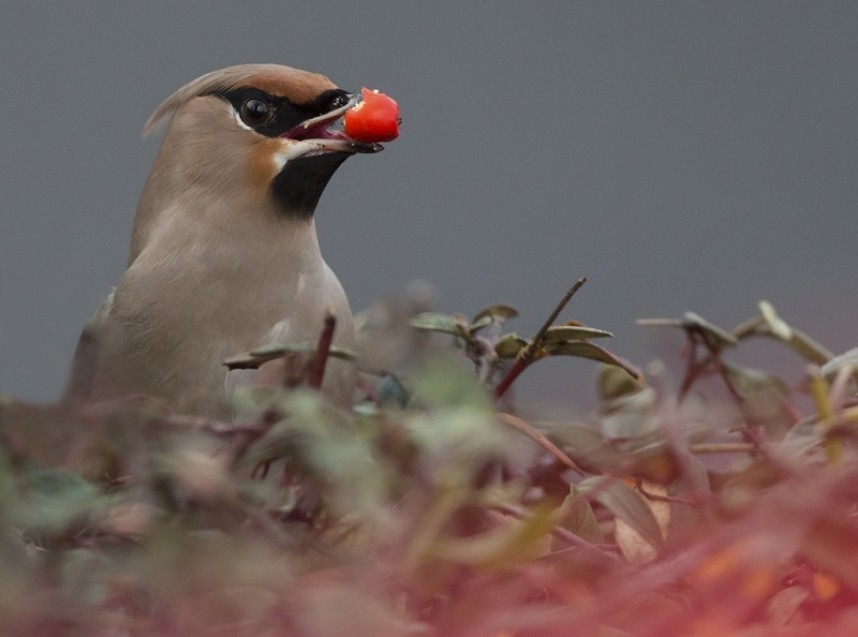
Waxwing Scarborough North Yorkshire © Steve Race
A small number of Glaucous and Iceland Gulls were seen throughout the area. Rufforth near York again produced the most sightings throughout the month involving both species. The thousands of gulls feeding at the tip regularly roost in the Lower Derwent Valley (LDV) so not surprisingly there were regular sightings from the Wheldrake area of both species during January. A long staying immature Glaucous Gull took up residence at Top Hill Low staying faithful to ‘D’ reservoir most days. The large number of wildfowl and gulls roosting there has created a food source as the Glaucous Gull picks out injured birds to devour! A 2nd winter Caspian Gull was also seen here on the 9th.
The best seawatch of the month must go to Staithes Old Nab on the 6th when a single Little Auk, Sooty Shearwater, three ‘Blue’ Fulmar and two Velvet Scoter were seen. The following day a Sooty Shearwater also flew past Spurn. At Filey on the 6th a Manx Shearwater flew past. Few Great Northern Divers were seen with none in the regular site in Scarborough harbour but a single was seen in Filey Bay all month and into February with three on the 6th and two later in the month. Two redhead Smew at Blacktoft Sands RSPB were a good find on the 9th. Nosterfield LNR then had a good day on the 10th when both Great Egret and Avocet were seen.
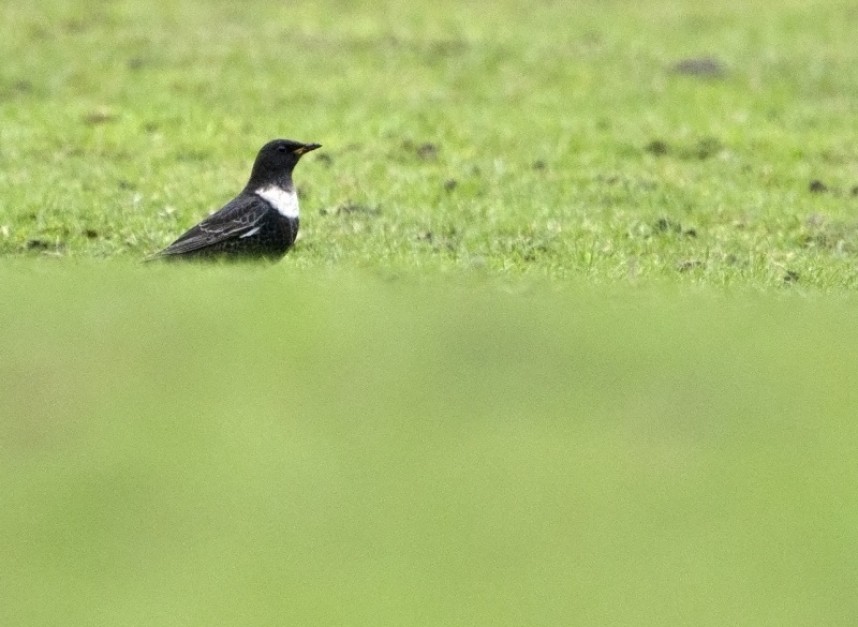
Ring Ouzel (male) Brompton North Yorkshire © Steve Race
Red-necked Grebes were seen in small numbers with several sightings of one off South Landing Flamborough. On the 12th Spurn recorded its first ever mid-winter Ring Ouzel with a male found at Sammy’s Point. Surprisingly Scarborough then followed suit with a male in a pasture field by Bromton church yard on the 14th and into February proving very popular alongside the Hawfinches.
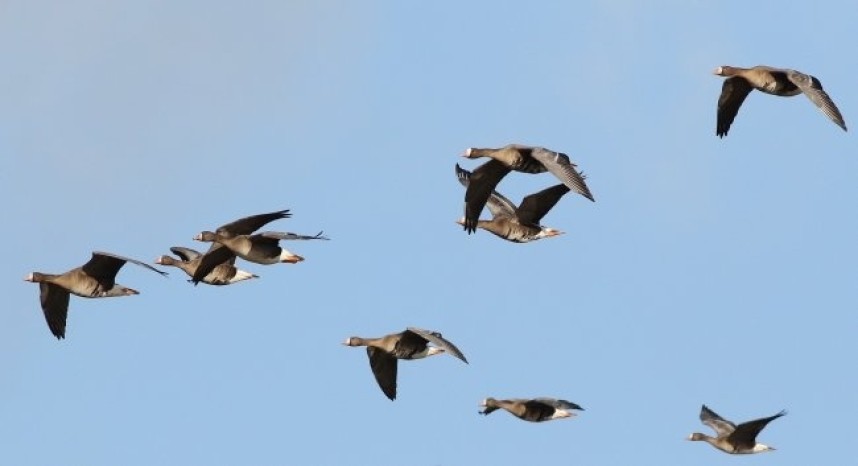
White-fronted Geese arriving at Spurn East Yorkshire © Spurn Bird Observatory Trust
Eurasian White-fronted Geese started to arrive mid-month with the biggest arrival on the 14th with numbers seen across the region. On this day 76 arrived over Spurn, 29 were at Sunk Island, 23 at Flamborough, 33 at Folkton near Scarborough and 18 at Nosterfield. A few Tundra Bean Geese arrived with the White-fronts. A flock of six geese in Cayton Carrs on the 16th contained one Tundra Bean Goose, two White-fronted Geese and three Pink-footed Geese! On the same day the Great Egret made another appearance at nearby Wykeham Lakes. The only report of a Black Redstart was a female seen at South Bay near the Spa in Scarborough on the 19th. The wintering juvenile Little Ringed Plover was seen again at Scorton Gravel Pits on the 20th. A Black Guillemot flew north at Hornsea on the 22nd.
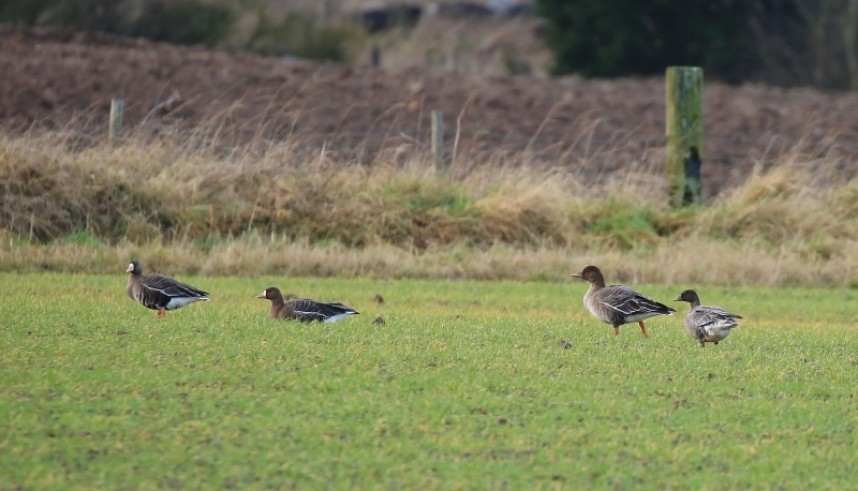
Tundra Bean Goose, Pink-footed Geese & White-fronted Geese Cayton Carrs North Yorkshire © Richard Baines
The only Grey Phalarope seen was one at South Gare for two days from the 24th. A Green-winged Teal was found at Staveley YWT on the 27th. Most of the regular sightings of Hen Harriers throughout the month occurred on the Humber and involved a smart adult male often seen in the Welwick and Sunk Island area. A Spotted Redshank was also seen at Sunk Island on the 26th. The month ended with larger water birds stealing the show. A Glossy Ibis spent the day at Kilnsea on the 28th and a Cattle Egret seen near Malton on the 30th may have been the one at Wykeham Lakes earlier in the winter. Despite many seen in the south-west of the UK this is still a very rare bird in our region.
Many thanks to all the observers who contributed sightings and photographs. This article covers North and East Yorkshire. For more wildlife sightings visit these great local, regional and national web sites
Spurn Bird Observatory, Flamborough Bird Observatory, Filey Bird Observatory and Group, Northern Rustic blogspot , Yorkshire Naturalists Union, Yorkshire Wildlife Trust, Scarborough Birders, Butterfly Conservation Yorkshire Branch Yorkshire Nature Traingle For National News: Birdguides
Richard Baines
Yorkshire Coast Nature



 Back to Blog
Back to Blog
